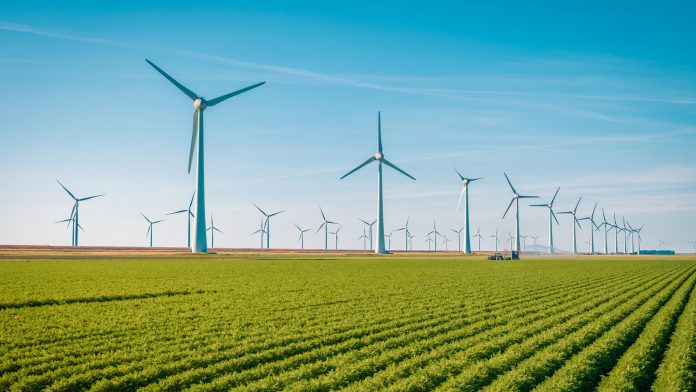Researchers have found that vertical turbines are more efficient and compact than traditional models, potentially advancing wind farms.
The researchers, led by Professor Iakovos Tzanakis from the Oxford Brookes University, discovered that the vertical turbine design demonstrated exceptional efficiency in large scale wind farms compared to conventional turbines, exhibiting an increase in performance of up to 15% when set in pairs.
The team carried out a comprehensive analysis compiling over 11,500 hours of computer simulation to establish that wind farm efficiency could be enhanced by exchanging traditional propeller-type Horizontal Axis Wind Turbines (HAWTs) for compact Vertical Axis Wind Turbines (VAWTs). Their findings contextualised the capacity for large-scale VAWT’s to outperform HAWT wind farm turbines, showing this for the first time in a realistic scale.
VAWT’s revolve around an axis vertical to the ground, displaying the exact opposite action of the HAWT design. The study indicated that when arranged in a grid formation, vertical wind turbines increase the performance of their neighbouring turbines, laying the blueprints for the future maximisation of wind farm potential.
Tzanakis said: “This study provides evidence that the future of wind farms should be vertical. Vertical axis wind farm turbines can be designed to be much closer together, increasing their efficiency and ultimately lowering the prices of electricity. In the long run, VAWT’s can help accelerate the green transition of our energy systems so that more clean and sustainable energy comes from renewable sources.”
This discovery could have a litany of beneficial implications for the UK, which is expected to almost to double its wind energy capacity by 2030. Refinement in turbine efficiency could lead to large scale wind energy harvesting techniques, which can alleviate the need for energy sources created by fossil fuels. Moreover, to avoid the worst impacts of climate change and meet zero net targets, wind farms need to be a globally realised form of energy, according to the Global Wind Report 2021.
Joachim Toftegaard Hansen, the lead author of the report, said: “Modern wind farms are one of the most efficient ways to generate green energy. However, they have one major flaw: as the wind approaches the front row of turbines, turbulence will be generated downstream. The turbulence is detrimental to the performance of the subsequent rows.
“In other words, the front row will convert about half the kinetic energy of the wind into electricity, whereas for the back row, that number is down to 25-30%. Each turbine costs more than £2m. As an engineer, it naturally occurred to me that there must be a more cost-effective way.”
The research is the most conclusive investigation of wind turbine performance to date, analysing the direction of rotation, array angle, turbine spacing, and the number of rotors. Furthermore, it is the first study of its kind to examine performance improvements in three VAWT turbines in a series.
Dr Mahak, the co-author of the article and Senior Lecturer in ECM, said: “The importance of using computational methods in understanding flow physics can’t be underestimated. These types of design and enhancement studies are a fraction of the cost compared to the huge experimental test facilities. This is particularly important at the initial design phase and is extremely useful for the industries trying to achieve maximum design efficiency and power output.”








